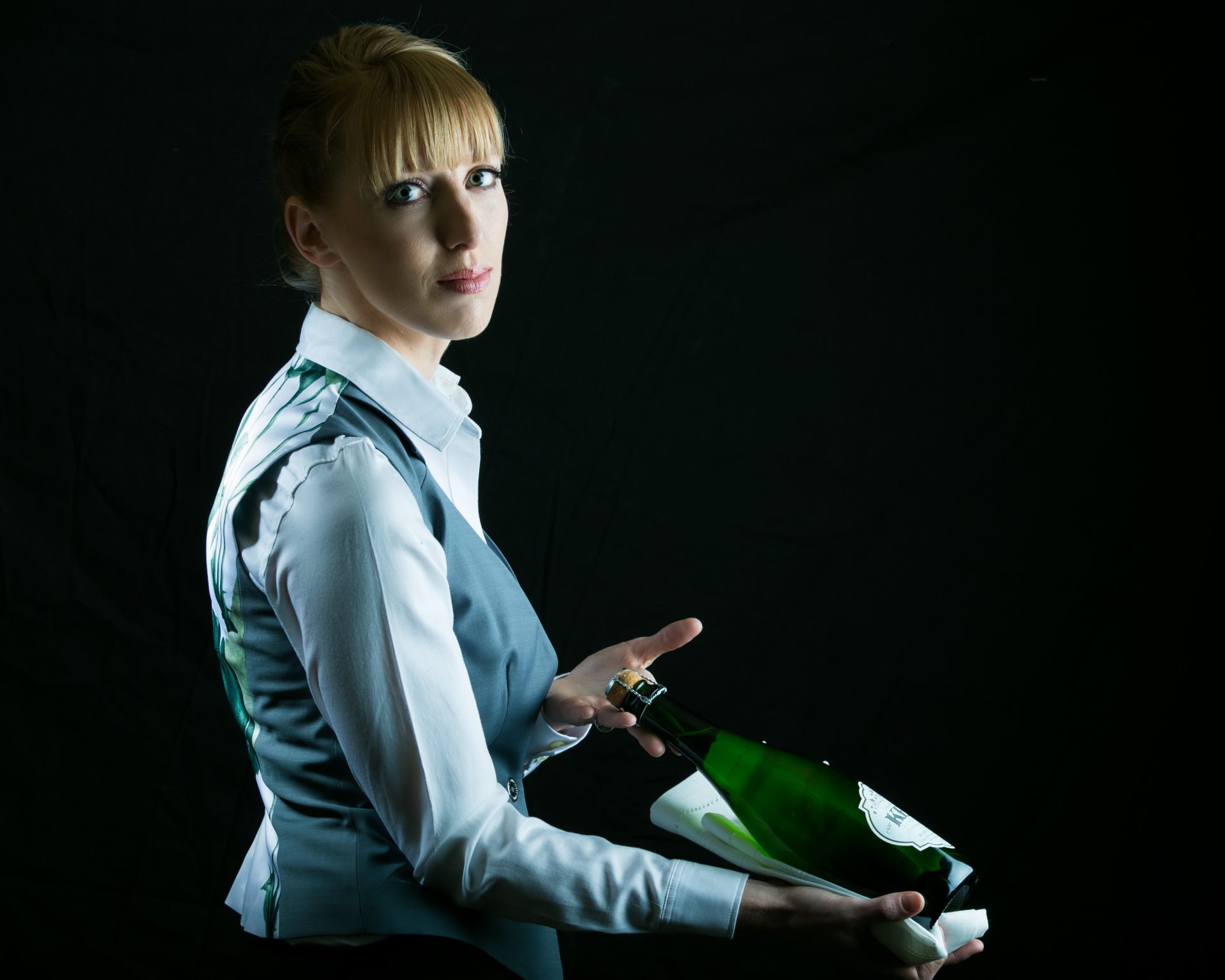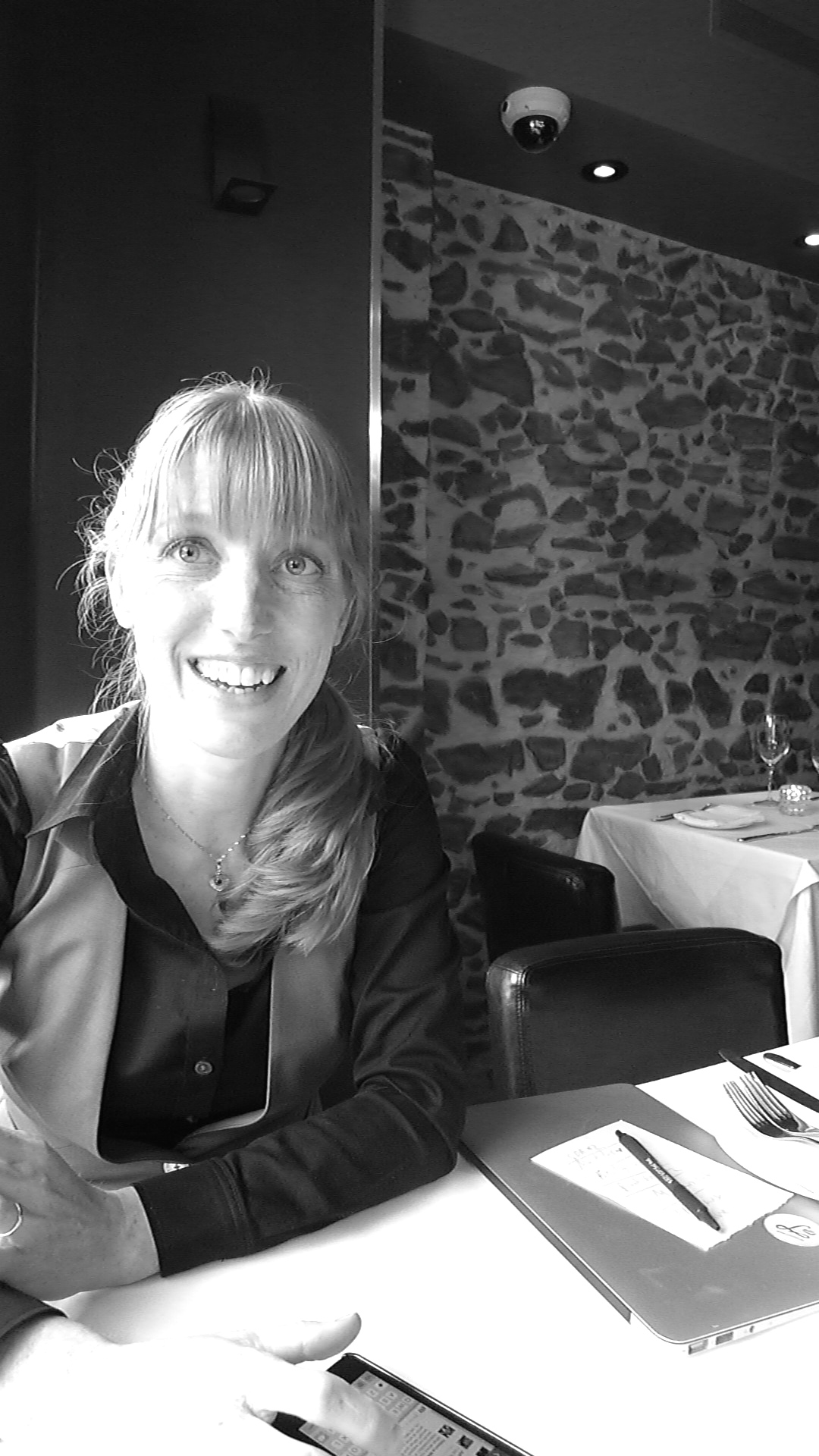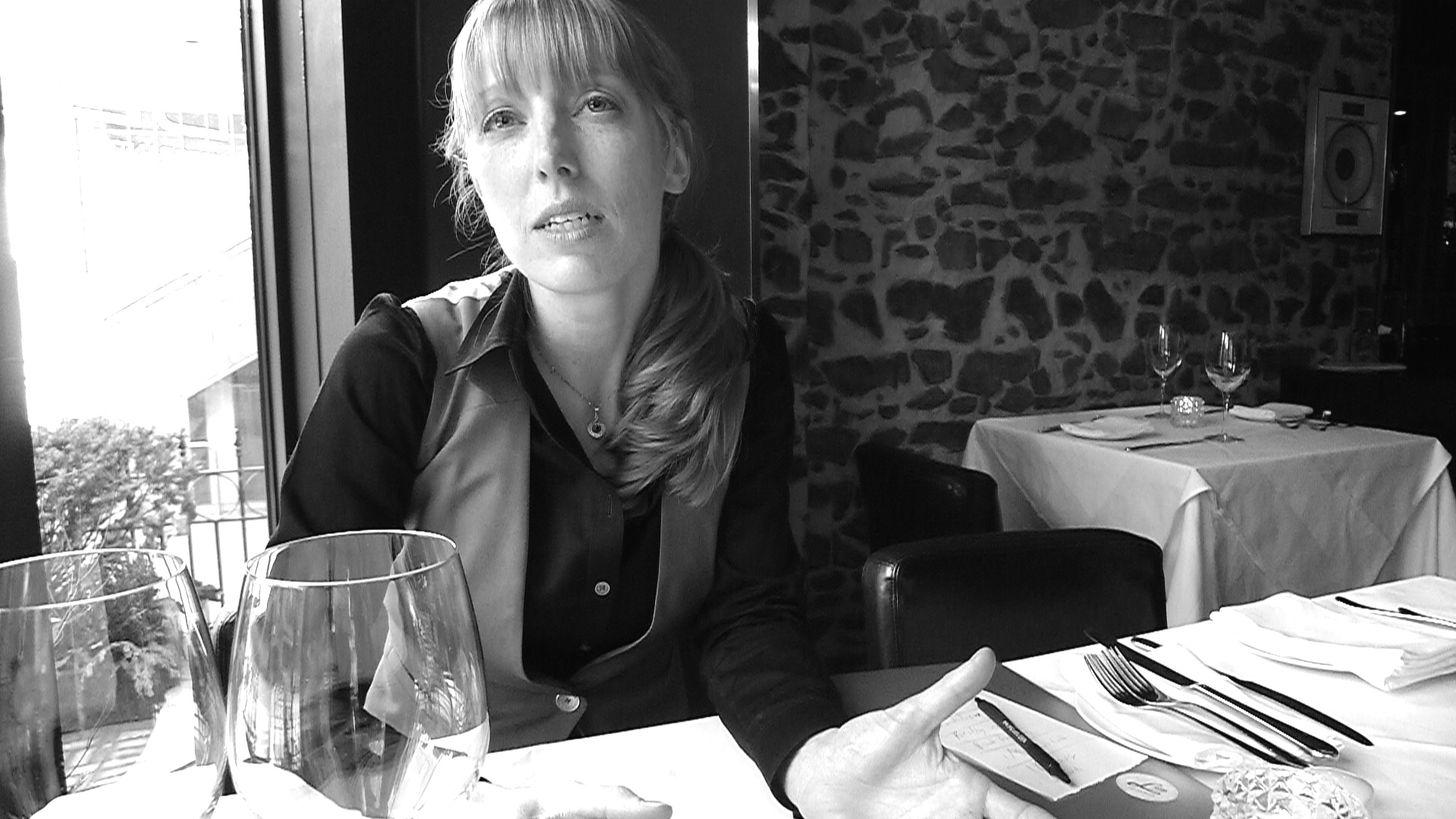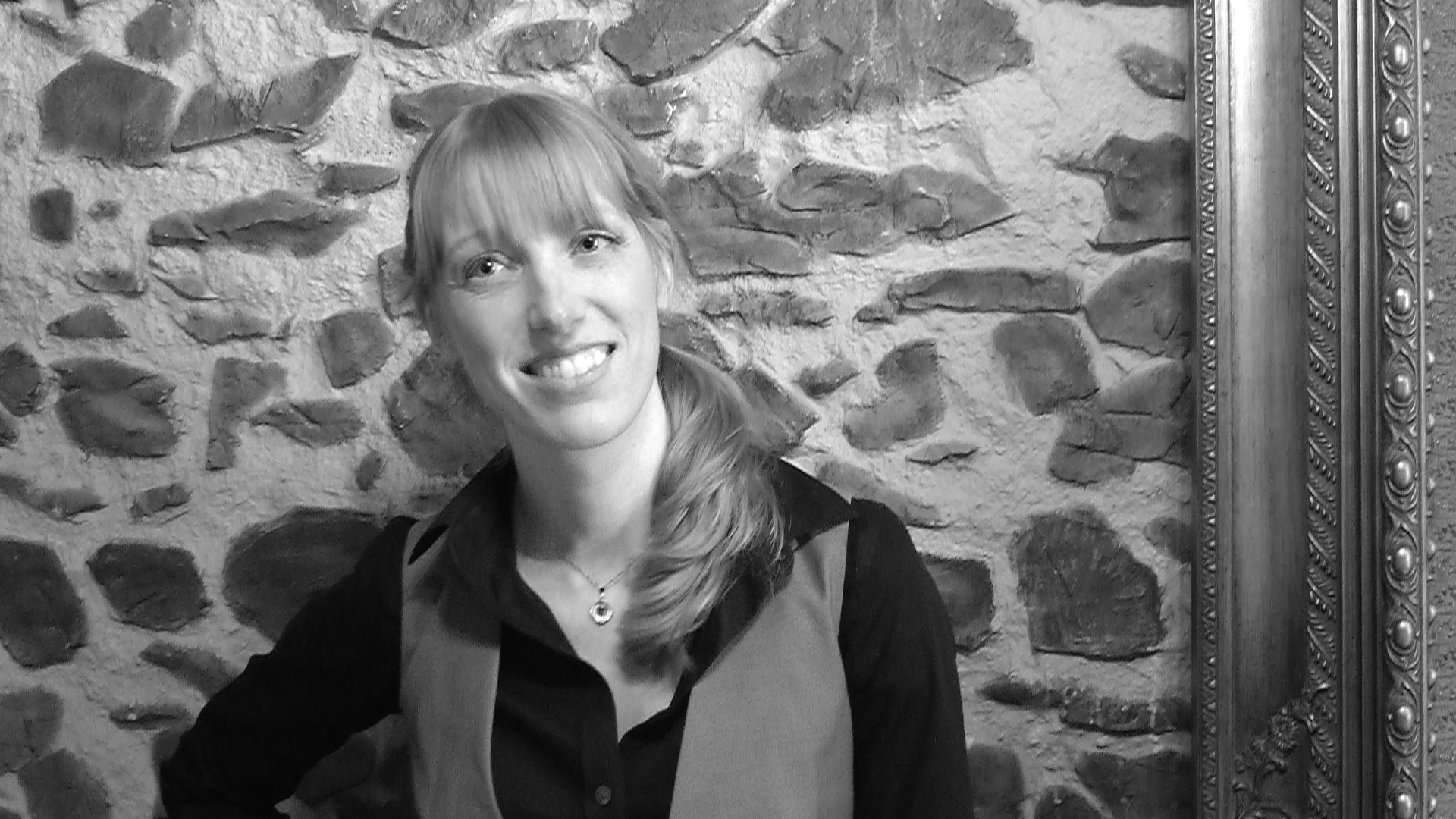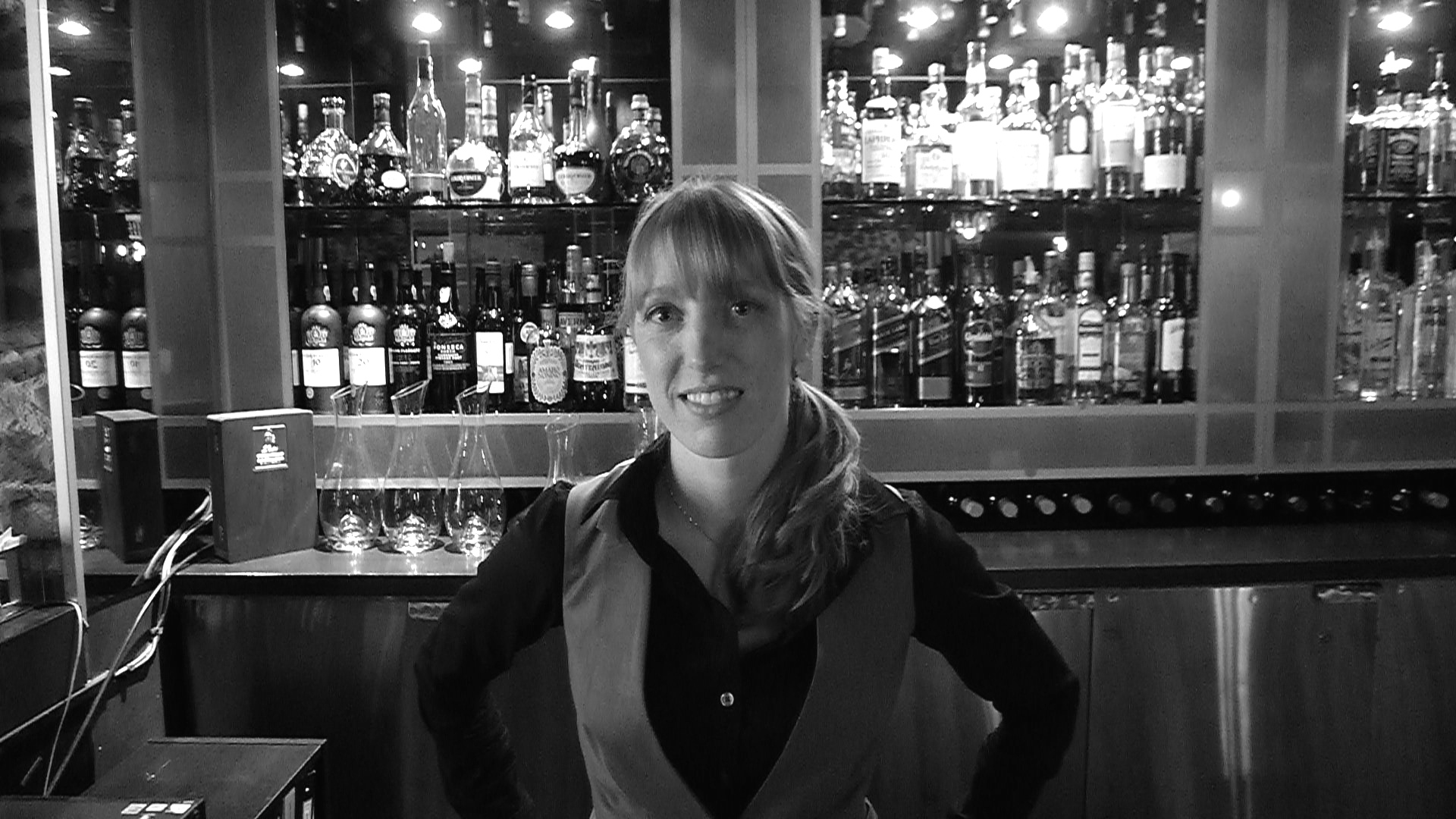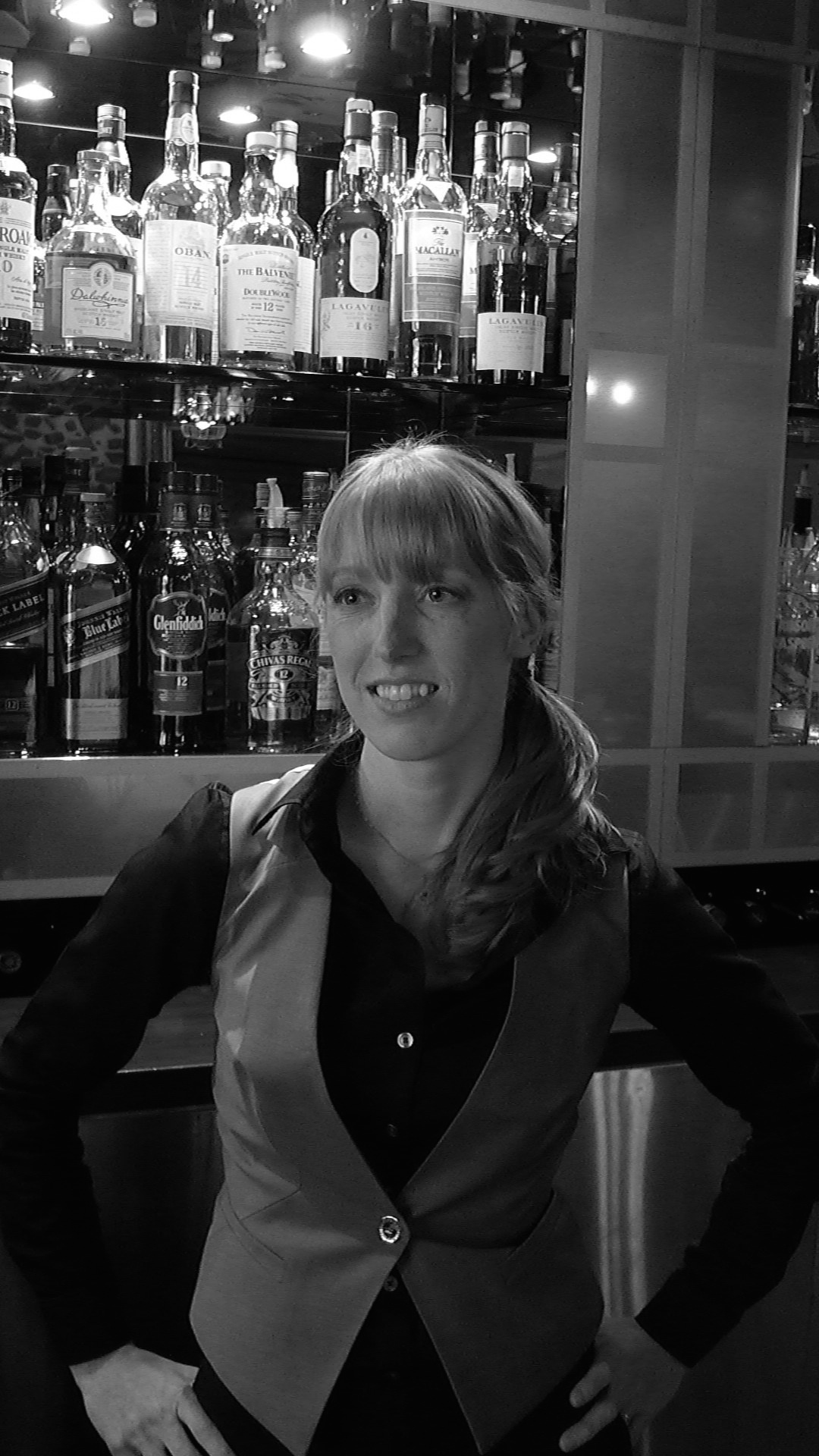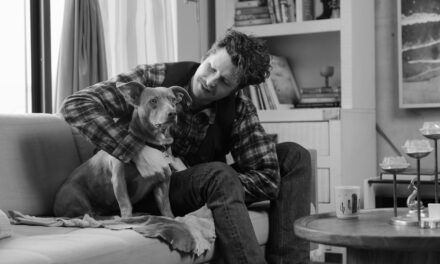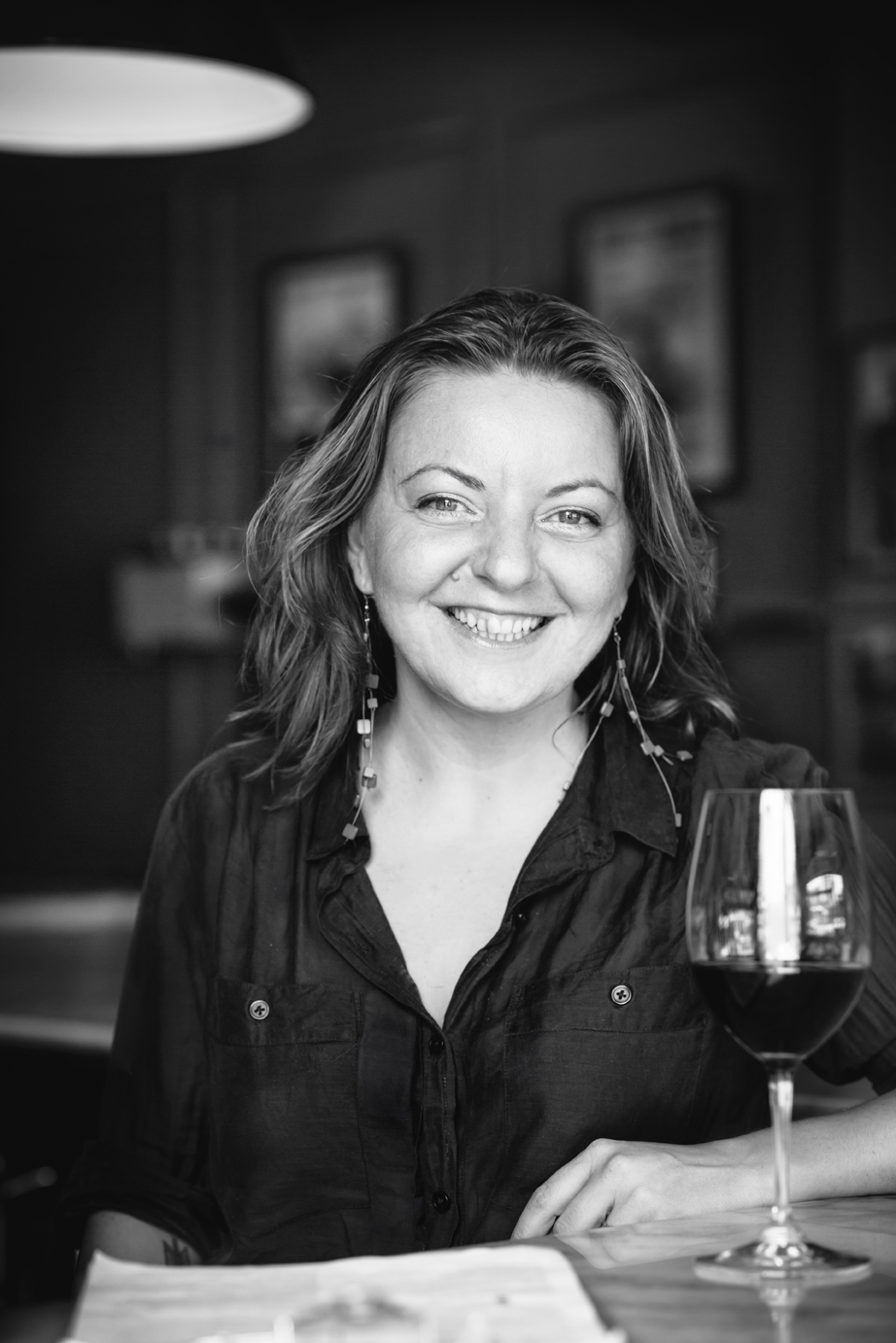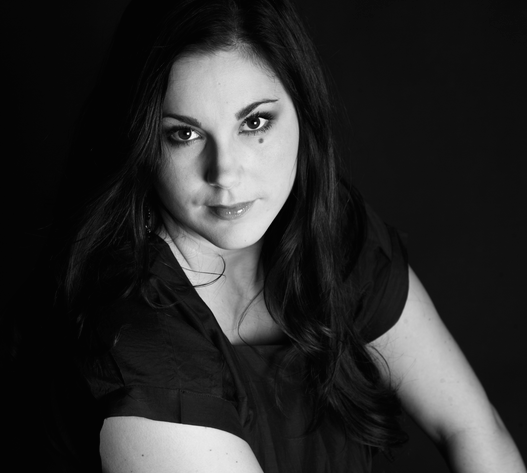
Sommelière Rebecca Meir-Liebman looking rather glamorous. Photo (and one on front page) by Fifth Floor Photography.
In the second of a ninth (and wildly popular) series, we interview some of the most talented up-and-coming Sommeliers in Ontario (and occasionally elsewhere).
A few years back I was flicking through the pages of a locally published periodical and noticed that when it came to Sommeliers it was the same names that seemed to pop up over and over again. I was also becoming gradually cognisant of the fact that we more established wine folks were well and truly “losing our edge” to these young blood Sommeliers.
Being well aware of the depth of new talent that was out there I finally decided to get together with a couple of fellow Toronto Sommelier “Old Guard” (Anton Potvin and Peter Boyd) to assemble a line of questioning that would give us an entertaining insight into the minds of these rising stars.
This week we sit down with the outspoken and talented Rebecca Meir-Liebman, a lady who runs L is for… with her husband/business partner Chef Eyal Liebman, as well as doing her things with wine all around the city…
Good Food Revolution: So Rebecca, what is it that you are doing these days?
Rebecca Meir-Liebman: I am splitting my time between running L is For… with Chef Eyal Liebman and working as the sommelier at BLU Ristorante.
Right now we are planning our 7th Chocolate Dinner and I am in the process of finding my next winery to collaborate with.
At BLU Ristorante I am running the wine list – buying wines, training the team on wine knowledge and recommending wines on the floor.
GFR: Tell us more about L is for… and the underlying philosophy behind it?
RM-L: L is For… is an alternative to the restaurant scene.
We detected a need for a dining experience that is more personalized and unique. We do not have pre written menus for our clients to choose from (that’s CUSTOM in our minds) or a wine list or a pantry to go through. When we meet with our client we come up with a concept. Lucky me, Eyal is talented enough and comes up with a menu meanwhile discussing the event concept with our client.
Because we are a chef/sommelière team we often design menus around specific wines that our client aged themselves or wines that our client requested us to come with. Eyal and I work very closely to make sure our pairings are accurate. That communication between a chef and a sommelier – I found missing in most restaurants in the city lately.
Many chefs are not interested in the connection between the menu and the wine list (the connection! – a lot of them are coveting the wine list) nor the wine pairings. Even though it can make or break a dish and the experience.
One of my favourite wine books is “Wine lessons from Charlie Trotter” he knew wine better than many sommeliers and knew his dishes can shine only if everything around is perfect, especially the wine. At Chef Trotter’s (RIP) restaurant when a guest came with or ordered a bold wine with a delicate dish Trotter’s sommelier would give a taste of that wine to him so he can make adjustment to the sauce in order to get a better pairing, according to limitations, of course. That is the philosophy we aim to implement at L is For… our scene is about the experience of food and wine.
A chef can not think it is only about his pretty dishes. It is not about the chef’s ego (and believe me Eyal has an EGO…), but he knows it is about the whole picture and we depend on each other to give the right experience to our client.
GFR: And what kind of experience and training did you have before doing what you do today?
RM-L: I have worked in restaurants/events since I was a teenager, not knowing it would eventually lead to a career. When I was offered my first management position I agreed to take it in condition that the restaurant paid for my wine courses; my heart was always drawn into the world of wine.
From some sommeliers I met at Didier’s restaurant and from being around Chef LeRoy I learned that I have to find a way to train my palate and taste as many wines as possible to really understand it, so I decided to move to a restaurant that sells some of the more expensive wines available in Canada – at the time Canoe as a server assistant – building myself in the higher end scene. There I had the opportunity to start and build what I call ‘my palate memory’.
I moved from there to Luma where I got offered sommelier training by one of my mentors, Anthony Demas, which I agreed to in a heart beat. After a year of intense training and tastings I took over the wine list at Luma and the training program under his supervision.
GFR: How many wine agents/merchants do you typically like to deal with?
RM-L: It depends on the wine list that I am running at that time, on the variety of wines I am interested in having.
For L is For…I am more focused on French and Ontario wines so I have 3 wine agents. For BLU, where my list is wider I have around 20. You want to find the balance between having enough variety of wines to choose from and keeping a tight relationship with your agents. There is lots of trust to build between wine agents and sommeliers, which I’ve invested in in the recent years. After all, there are only so many wines you can try and if you have wine reps who have a good palate to filter wines for you there is lots of time you save right there.
GFR: What is your favourite part of the Sommelier role?
RM-L: I love tasting new wine; there is a real excitement to your whole senses when it is a spectacular one. Meeting winemakers from around the world, getting those unique stories behind the wines, and passing those to my guest at their dinner is something I find very satisfying.
GFR: What makes for a good agent/supplier in your mind?
RM-L: A good supplier is first and foremost reliable; if my wine does not arrive on time my reputation is on the line.
Secondly they have to have a good educated palate, after all they are my first filter, if they know what I am not looking for, like and dislike – it saves quite a lot of time for both of us.
GFR: How do you feel about Canadian wines? Any current favourites?
RM-L: I am a great supporter of local wines; after all, all our Chocolate Dinners were paired with local wines. As written in the bible, you have to take care of your family first, then your village, then your country, and after that help people from abroad.
There is nothing more real or natural than eating and drinking mainly what grows around you. Our vines are very young and we are still researching our own terroir, what grows best here and how to deal with the weather changes. It takes time and I have respect for wineries that are aware of that such as Norman Hardie, Stanners, and Southbrook, wineries that keep on experimenting with our terroir.
I have lots of respect for Southbrook who work hard on practicing sustainable farming and growing the grapes organically.
Norman Hardie wines are extraordinary and never fail to deliver.
Exultet Estates‘ Pinot Noir and Chardonnay’s are extremely refined.
Kew Vineyards put on the map a beautiful Marsanne/ Viognier, who knew we could get a great Marsanne in Canada…?
GFR: There are so many Ontario wineries now. How do you choose whom you are going to work with?
RM-L: I make sure to take as many trips to Niagara and PEC as possible to discover upcoming wineries. First and foremost the wines have to be tasty, have a good balance, and after that if there is an interesting story behind it, as that definitely helps sales on the floor.
GFR: What could Canadian wineries do to help get their wines onto the wine lists of the best restaurants? Do you think that they give the restaurants enough support?
RM-L: We have a long way to go when it comes to that.
As a sommelier of L is For… and BLU I get more visits from winemakers from around the world than visits from Niagara’s winemakers who live just around the corner.
From some reason there is a disconnect between artists in our field, winemakers do not meet with chefs and/or sommeliers and I find that to be the heart of the problem.
The winemaker is the inspiration behind the wine and as much as I love their wine reps it is important for me to meet the winemaker and hear from him/her about his/her philosophy.
At L is For… Chocolate Dinners I bring them to our dinners and thereby tightening the relationship between the winemaker, the chef and our guests.
PEC is totally different when it comes to that; there the first person I meet is the winemaker. Norman Hardie approached me, when I was just a junior sommelière, to meet with him to try his new vintages; I am not sure why there aren’t more winemakers who follow his steps. It almost feels as if wineries take my support for granted, without thinking what a struggle it still is selling local wines on the floor, and it would definitely be easier for me to sell Chocolate Dinner tickets if I’d offer foreign wines at my events.
It’s in the best interest of the local wineries to reply to my cry for friendship and mutual support. There was a debate about local wineries on social media recently where I showed my support to local wineries and surprisingly got no encouragement even from the wineries themselves who were involved in that same discussion – not public or personal – and it hurts. I would like to close this with pointing out the good – like Paul DeCampo of Southbrook – that was very active on social media to support my last dinner with a winery that is not his – we are all fighting for the same cause!
GFR: What do we do well in Ontario, in your mind, and for your palate?
RM-L: We are great with sparkling wines, Hinterland are a good example on how much our terroir, especially in the County, fits making sparkling.
KEW, Château des Charmes, and Huff Estates make great sparkling as well.
We have always been known for our Rieslings but we are not appreciated enough for our Chardonnay’s. Burrowing Owl, Norman Hardie and Southbrook show us different expressions of beautiful Chardonnays.
GFR: And what do you feel we should perhaps give up on?
RM-L: Cabernet Sauvignon, Petit Syrah, Malbec and their blends. We are great with dessert wines but lets leave the desert grapes to places like Israel and Australia…
GFR: Just as there is from everywhere in the world, there is quite a lot of dreadful wine coming from Ontario also. How do you feel about the issue of people simply promoting something because of it being local, and not because of its quality?
RM-L: Being a sommelière I get my customer’s trust that I will be – first and for most – an ambassador of a good palate and after that support local, organically grown, etc. If a wine is not up to par nothing else matters, after all people are interested in the wine’s flavour more than anything else and that how it should remain.
GFR: Having spent quite some time in Israel, what are your thoughts on the Israeli wine industry? What do they do well? And what should they stop trying to make?
RM-L: Israel is fascinating. People just took over vineyards that got neglected after a war and started making wine, without even owning the vineyard. Every piece of land there has history. Their terroir is almost the opposite to ours, Cabernet Sauvignon grows there beautifully, blends of Cab/Syrah/Merlot can be great, I even had a pleasant Viognier there.
Their Merlot taste a bit odd when made as a single varietal, the land there is just too dry for it to express well. Petit Verdot is very much in trend there now, I didn’t really get the excitement to say the least.
GFR: And what about the Israeli wines that we see over here in Canada? Would you say that there was any decent stuff? Producers or bottles that you would recommend?
RM-L: The bottles we get here are not the greatest Israeli wines, they are mainly brought here because they are kosher; many of the better boutique wines are not kosher. I really tried to help some of my favourite winemakers from Israel to export their wines but the numbers do not add up; If we add to their wine price shipment, taxes and restaurant mark up it ends up as expensive as a well balanced Burgundy. It is a hard sell.
For good Israeli wines you have to travel to Israel, Tzora Vineyards make a great blend called Shoresh and Pelter have great balanced wines as well.
GFR: I’ll back you up on the Shoresh belnd… most impressive… a fair bit of oak on there though… thank you so much for sharing, Rebecca.
How aware of wine were you whilst growing up? Were you around wine from an early age?
RM-L: Growing up in a European family wine, great wines were always around. My father has a great palate and I learned from him, at a young age, how to identify quality in wine and beer.
GFR: Can you remember your first taste of wine?
RM-L: Honestly I can not, I grew up in a Jewish family where all the members of the family have to taste the ‘kiddush’ wine every Shabbat dinner from the age of 7 days.
GFR: When do you feel children should be introduced to the wonderful world of wine?
RM-L: Whenever they develop a curiosity for it, I am not a big believer in rules. Well, maybe it is a good thing I am an aunt and not a parent…
GFR: When did you first decide that you would like a career in wine?… and was it always with a view to being a Sommelier yourself?
RM-L: I was always drawn to the magic of the hospitality industry, there is something very satisfying about walking your guest through an exceptional evening of flavours.
I studied Art History at The University of Jerusalem so I always felt belonged to the world of arts. I see wine and food as a form of art, if it is made just to feed people and getting them ‘tipsy’ I lose interest.
Honestly, it feels more as if this career chose me rather than me choosing it, it is like meeting your soul mate, it just happens, and as soon as it does you just knew it is deep inside that it is right (yes, I am still talking about my career…)
GFR: So who or what gave you your first insight into the world of wine?
RM-L: My father, he made me appreciate exceptional flavours from young age. As a kid I was never into ketchup or artificial candies, I enjoyed European triple cream cheese, duck breast and lamb.
If you have awell balanced palate from young age it makes it easier to recognize good wines as you grow up.
GFR: The Sommelier world is notoriously full of pretentious arseholes, and after seeing that film Somm I worry about the emergence of a new Bro culture… I’d love to hear your thoughts?
RM-L: I focus on my own missions and wine learning curve, being or not being pretentious is not going to make anyone a better sommelier.
GFR: Which wine regions have you had the opportunity to visit?
RM-L: I have been to several regions in France, Greece and Israel. I always have the ‘itch’ of getting on a plane and exploring a new terroir but my life is too busy with projects here for me to fly as often as I’d like.
GFR: Have you ever made your own wine?
RM-L: I find it important to watch winemakers and learn about winemaking in the same way I found it important to watch chefs cook, but I believe we should all do what we are excel at.
It is impossible to be great at everything, being a sommelier and running a private chef company is wide enough as it is- I’ll leave winemaking to the experts.
GFR: And where would you like to make wine (in a pipe dream)?
RM-L: More into tasting wines than making it. It is like a film or art critic, there is no need for them to be artists but they do need to be able to recognize talents.
GFR: How much of a Sommelier’s work should be in the office/cellar and how much on the floor?
RM-L: At least half of the work should be on the floor. An interesting wine list depends on moving also less popular wines and order to achieve that you need a good sommelier on the floor. Inspiring our guests and getting them excited about the art of wine is part of my job; as well as supporting the servers and encouraging them to be more bold with their wine suggestions.
GFR: In your previous experience as a Sommelier were you also working as a manager? … were you ever closing? all that fun stuff (joke)
RM-L: So much fun… At Luma I’d finish closing the restaurant at 2-3am, waking up for an 11am tasting the next day. Well, I did have alcohol around me all the time to keep me going…
GFR: So do you prefer to manage people or bottles and why?
RM-L: They are all connected, without inspiring your team your wine list does not move enough. I put a lot of emphasis on wine training because otherwise I’ll mainly sell Malbecs and Pinot Grigios.
My bottles are the people who make them, it always comes back to people.
GFR: What have been your career highs and lows?
RM-L: Highs and lows are for celebrities. The faster you go up the faster you fall down. I build my career slowly and safely, at L is For…I earn the trust of my clients, I build relationships so even when something goes wrong there is a way to recover from it.
GFR: Who is, in your mind, a real role model for Sommeliers?
RM-L: Chef Charlie Trotter, his approach to our profession in conjunction to his and the relationship between food and wine should be embraced by all.
GFR: Do you still have nightmares about working as a Sommelier? I do… regularly… and it usually involves being unable to find bottles in a cellar… and the clock is ticking away… in fact I had one last night!!! And I haven’t been in the role in over five years!!!
RM-L: Not so much anymore, running events in different locations in the city and working with a chef who cooks a lot a-la-minute forced me to deal quite well with stress. It almost doesn’t matter what happens, I find a way to work around it.
GFR: Sommeliers famously have their Sundays off… What’s your idea of a perfect Sunday?
RM-L: Driving to some of my favourite wineries in PEC. There is something about the county and the people there, it keeps me grounded and connected to nature.
GFR: Where are your favourite places to dine and drink in Toronto.. perhaps tell us a hidden treasure of our lovely city?
RM-L: I do not dine out a lot, I mainly spend on good ingredients and cook at home. When I do go out l’ll have Japanese food, it keeps me healthy and fits my palate.
GFR: Do you cook yourself? What’s your favourite dish to cook these days?
RM-L: I do have a private chef at home… so he allows me to cook only when he is not around.
GFR: And have you had any cooking disasters recently?
RM-L: I married a cook for a reason…
GFR: Do you feel that there is a good Sommelier community in Toronto?
RM-L: Honestly – I feel there is lots of ego involved, and that does not help create a healthy and vibrant community.
GFR: Do you hang about with other Sommeliers? Or is it crazily competitive?
RM-L: I used to hang out with O&B sommeliers but since I left the company not so much anymore. I find there to be a general disinterest in mentoring, exchanging ideas of passing on knowledge from my sommeliers in the city.
That said, there is a group of younger sommeliers that is forming to meet for tastings so I am excited to be part of a group who tries to break from that cycle.
GFR: How do you feel about Toronto as a wine and cocktail city? Where do you go if you need to get your wine or cocktail on?
RM-L: Seven years ago when I came to Toronto I couldn’t find a decent coffee and now you can find them all around (interlaced with still, very bad coffee…). Toronto is filmed as NYC in a lot of movies and TV series and unrightfully mistaken as NYC.
Toronto is far from being at NYC level when it comes to our industry. We do not yet have a thriving food and beverage culture – but we are working on it – it is our job as industry professional to make this change and not ask the customer to change for us…
GFR: What would you be doing if you were not a Sommelier?
RM-L: I’m very good at buying things, finding the right price and the right fit. I’d probably be a prop buyer for the film industry which was my first career in Israel.
GFR: What are your thoughts on music in restaurants?
RM-L: It would be great to see more live music of talented local musicians in the restaurants across the city.
GFR: Do you have a favourite food/wine related scene in a film/movie or show?
RM-L:
From the Muppet Show, with the Swedish Chef making donuts.
and The Muppet Movie: Steve Martin Cameo.
GFR: Aha, so you like the Muppets then. I had forgotten about Steve Martin’s Sommelier!
I know that you have quite a few friends from outwith the industry. What do they think of what you do for a living?
RM-L: They just think I am getting drunk all the time and that my life is a just a big party of Champagne and caviar…GFR: I’m guessing that you have non-industry friends… how do they feel about what you do for a living?
GFR: What are your thoughts on blind tasting wine?
RM-L: I find it to be a great tool for staying neutral when tasting wine. If you know what grape varietal you are about to taste your mind will already come up with ideas of what you are going to taste. You want your senses to lead your tastings not what you read in books about that type of wine or the pre notions that you got about it. I use blind tastings at my wine training sessions and find it to be a very useful tool to taste better.
GFR: Are you a better blind taster with or without a bad hangover? I’m definitely the former…
RM-L: I never get a bad hangover I am over it, drinking is my job I don’t abuse it. In our industry people get confused between working and partying, we make the party we are the party but we do not participate in the party.
Without meaning to offend anyone, I see excessive drinking as a college “thing”; it is cute when you’re in your teens but it loses its charm after 30.
GFR: *cough*
Exactly.
*cough*
What’s your current favourite wine region?
RM-L: Northen Rhône, and especially Condrieu.Les Vins de Vienne make spectacular Condrieu.
I’m a classics person, a white wine lover, so the Loire Valley is the region I always go back to; Nicolas Joly, offers some outstanding Sauvennièr. Muscadet is usually a good value wine when I do not wish to break the bank.
GFR: In your mind, as an agent, what is “hot” in the world of wine right now in Ontario?
RM-L: I do not bother following trends, I am trying to feel my clients and my restaurant and check for myself what wines I should offer next. The real good regions will never really go out of fashion.
GFR: And what’s not so hot? What has fallen out of favour in the province?
RM-L: Again, not following trends…
GFR: When it comes to wine is there anything that you feel is overrated?
RM-L: The way people perceive the sommelier profession is overrated in my opinion. The original sommelier was the king’s servant who took care of the wine cart on the king’s journeys. We are basically servers of wine, there shouldn’t be so much ego around that.
GFR: Your partner and yourself are known for hosting complex chocolate dinners… how the hell do you go about pairing wines with chocolate? Surely that gets a bit tough after a while?
RM-L: It actually gets easier. The more we work with chocolate the more we understand it’s flexibility.
Sorry people, Chocolate does not work with wine if it is served not as part of a whole dish they ruin each other like a house of cards. It will usually ruin the wine and in certain situation, as Champagne, it’ll even ruin the chocolate and the mouth feel that the clash between the bubbles and the chocolate created with get back at the wine and kill it.
I see chocolate as an ingredient in the same way that I see asparagus, which is also problematic with wine pairing, yet it does not mean that I can’t pair wine successfully to a steak with asparagus…
I depend a lot on working with a chef who knows chocolate well. Chocolate, in a similar way to wine, comes from different terroirs and it’s tasting profile changes according to the terrior and the chocolate maker. So the more you know chocolate the more room you have to play with flavours to achieve the right pairing.
I try to forget all the wine pairing rules and just be honest to my palate. The ‘wrong pairings’ can be just right by choosing a chocolate with more or less acidity or adding more body or spice to the sauce, these details can make or break a dish. The better the wine is the easier it is to pair it. It is like a great tango dancer he will lead and make his partner look like a great dancer even if she is not, therefore choosing a good complex wine is a crucial part for good pairing as much as choosing the right chef.
It is like two people who have no common interests but are both intelligent and interesting, they will usually get along and have a fascinating conversation. The same with wine – if the wine is complex and the dish is balanced they will find a way to get along. They do need something in common in their personality so you have to use your instincts more than anything else with pairings in the same way that a matchmaker has to use her instincts more that checking the ‘matching charts’.
GFR: What is your favourite wine pairing right now?
RM-L: At our last dinner we worked with a winery that did not have a dessert wine so I paired Appassimento style Cab/Merlot blend with a spiced carrot cake with Valrhona Taïnori, goat cheese mousse and candied orange. When you make such a pairing it better work otherwise you will look like a total idiot. And I think it worked but I can’t be the judge…
GFR: Okay… three pairings with me on the spot?… but with chocolate influenced dishes.
What would you suggest for them wine or beverage-wise… and why?
1: Smoked Eel, Oysters, with a White Chocolate Vinaigrette
RM-L: Norman Hardie Calcaire, any Champagne or sparkling wine.
2. Duck Terrine with an Orange Chocolate Sauce
RM-L: Riesling, Pinot Gris or Pinot Noir
3. Venison stew with chilli and chocolate and mashed sweet potato
RM-L: Cab Franc, Merlot, Cab/Merlot or anything medium to full bodied.
As to the why for all the above – I work with my gut and it says it’s right.
GFR: Do you often drink beers or spirits?
RM-L: Wine is work for me, beer is home – it is my comfort zone.
I was born in Belgium to a family who adores Trappist. My grandmother used to say that if you have bread and Trappist you do not need anything else in life.
When it comes to spirits I agree with the preaching of Chef Charlie Trotter who stopped serving spirits in his restaurant because it overwhelms the palate and leaves no room for food. Since I am in the food industry everything goes around it and has to pair well with it.
GFR: What is your least favourite part of your job as a Sommelier?
RM-L: Making sure I do not go over my allotted wine budget…?
GFR: What is your weapon of choice when it comes to a corkscrew?
RM-L: I like hand made corkscrews – I have a thing for pretty wine openers. Laguiole make great ones. There are some knife makers in France who make one-off corkscrews and they cost less then the ‘names’.
GFR: Speaking of which, where do you stand on the screwcap vs. cork debate? And how do your customers feel about that?
RM-L: I love tradition and believe that wine is a lot about the ritual around it. There is an article that came out recently where they proved wines can age as well when sealed with a screwcup. There is an excitement in opening a bottle of wine, which you lose with twisting a screwcap. I’d leave the screwcap to $30 and under wines.
GFR: Due to us always being around alcohol, many people in our industry often have quite the increased tolerance for wine/booze, or they develop issues. What is your limit and how do you keep yourself in check?
RM-L: I saw lots of people fall into addiction as I grew up which developed a natural immunity to addiction for me.
I see tasting as my job so I really limit my drinking when it is not for the sake of learning something knew or developing my palate. The challenge of staying healthy with this career choice if definitely there.
GFR: Have you ever been “cut off”? If so, where and when was the most recent time?
RM-L: I probably the first person who answered no to this question… I just have a thing for not losing control.
GFR: Do you have a good hangover cure?
RM-L: The Italians have an expression that says that there is never too much wine there is not enough food. Balancing the alcohol with food is my secret.
GFR: How many wines do you taste in a week?
RM-L: It really depends on the week but on usually more than 70.
GFR: When tasting with clients do you choose to spit or swallow?
RM-L: I swallow, spitting in front of a client is not classy…
GFR: What’s your “house” wine at home?
RM-L: Chenin Blanc “De La Colline”(the way to Eyal’s heart) , Stanners Cab Franc.
GFR: Most remembered glass of wine ever?
RM-L: I am a big sucker for old world wines, was never into new world Cabernet style of wines. Because of that I can’t forget the first Cabernet Sauvignon I fell in love with from Heitz, Martha’s Vineyards.
GFR: What is your perfect glass (or bottle) of wine at the end of a crazy day at work?
RM-L: Champagne, but unfortunately I can’t afford it every day… any good sparkling should do.
Cuvée Catharine Rosé from HoP is my cure for a crazy day at BLU.
GFR: And now the cheesy question Rebecca… If you were a grape varietal which would you be? and why?
RM-L: Chenin Blanc. You grow it in the wrong place at it tastes awful, when in the Loire it is phenomenal. I get inspired by and breathe the terroir around me.
GFR: Thank you for taking the time Rebecca!

Edinburgh-born/Toronto-based Sommelier, consultant, writer, judge, and educator Jamie Drummond is the Director of Programs/Editor of Good Food Revolution.
Peter Boyd has been a part of Toronto’s wine scene for over two decades. He has taught the Diploma level for the International Sommeliers Guild, and has been the sommelier at Scaramouche Restaurant since 1993. He also writes about wine, food and pop culture and raises show molerats for fun and profit. He’s also one of the most solid guys in the business.Trust this man. Seriously… he knows his shit and is slowly taking over this city. He just celebrated his 66th birthday!
A well-known and much respected figure on the Toronto food and wine scene for almost twenty years, Potvin has worked in many of the city’s very best establishments including Biffs, Canoe, and Eau. In 2004 Potvin opened his incarnation of the Niagara Street Café, a restaurant that has gone from strength to strength year after year, with universal critical acclaim. Anton spends much of his time traveling and tasting wine and has been ranked highly in consecutive years of the International Wine Challenge. Anton recently opened his exciting new project DaiLo with Chef Nick Liu.

